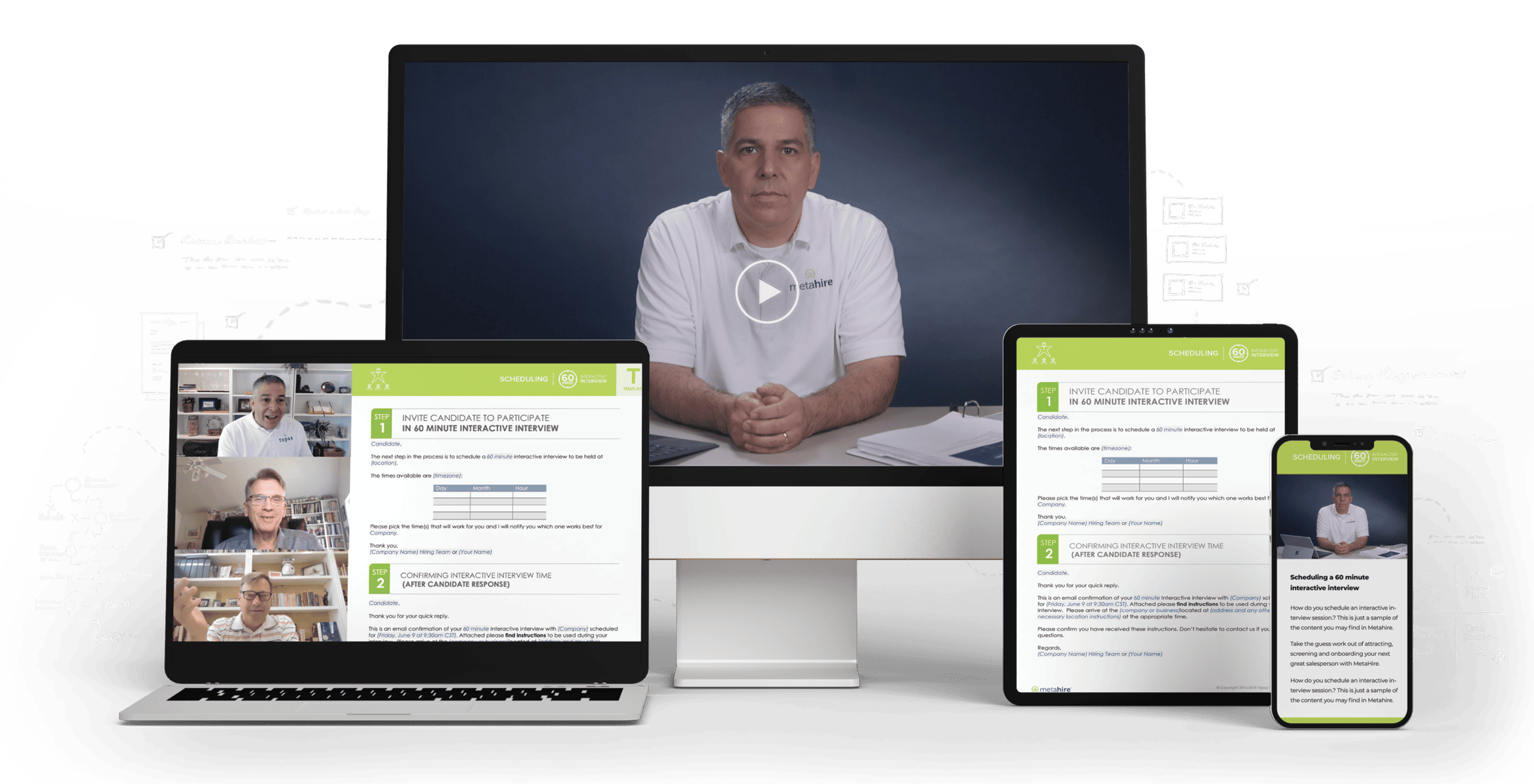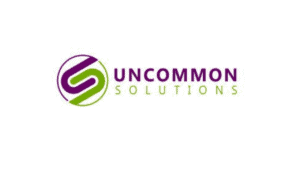Sales Prospecting—it’s the driving force behind every successful sales process: no frills, no fuss, just the foundation for building lasting customer relationships and growing your business.
Whether or not you want to acknowledge it, prospecting (while it can feel like a chore sometimes) is a salesperson’s strategic advantage.
If you don’t implement prospecting, you’ll likely struggle to get consistent, high-quality business. But conversions flow naturally if you apply the right tools and strategies to create scenarios where connections thrive.
In this latest blog in our series focused on prospecting, we’re bypassing the jargon and diving straight into practical insights. Through real-world scenarios and actionable tips, we’ll uncover the strategies and tools that can make prospecting worthwhile. Keep reading for more.
Prospecting with Personalization
In today’s hyper-competitive business environment, personalization is no longer a luxury — it’s a necessity. Throwing spaghetti at the wall and hoping it sticks (sending endless generic outreach messages without a game plan) is a thing of the past because intent matters. With truly endless options at their fingertips, customers need your outreach to be relevant and offer value. They want to feel understood, appreciated, and catered to. That’s where personalization in prospecting, one of our primary tips for prospecting success, comes into play.
Personalization involves tailoring your interactions with potential customers based on the information you have (or have researched) about them. Recognizing their unique needs and preferences and addressing them directly can significantly enhance your prospects’ engagement, boost conversions, and foster loyalty. However, it’s essential to strike a balance. Over-personalization can come across as intrusive or pushy and might turn prospects away. Be delicate with your approach and try out various outreach messages to see what works and what doesn’t.
Real-World Scenario
Imagine you’re a sales rep for a software company that offers diverse solutions. You’ve recently connected with John, the CEO of a startup specializing in graphic design. Instead of bombarding John with generic information about all your products and focusing on your business, you emphasize how your design-specific software could solve his team’s challenges. A great option would be to mention how other graphic design companies have benefited from your software or even offer a personalized demo focusing on features that John’s team would use the most based on what you know about his company and customers.
This personalized approach shows John that you’ve taken the time to learn about and understand his business and care about his specific needs, making him more likely to engage further. When you apply the Buyer Facilitator mindset to your outreach process, you realize that outreach isn’t just about making a sale — it’s about the start of building a long-term relationship.

Leveraging Social Media for Prospecting
If you’ve been in sales for a while, you’re no stranger to using LinkedIn and other social media platforms for prospecting. However, are you doing it effectively? With over 930 million global users (and counting), LinkedIn is an excellent resource for finding and connecting with prospects. But if you’re mindlessly sending connection requests or InMail messages and hoping you’ll miraculously hit your quota for the year, you’re barking up the wrong tree.
Instead, use LinkedIn’s advanced search features to filter based on your target audience and their interests, job titles, companies, or groups they’re a part of. You can also use tools like Sales Navigator to save leads in a list and keep track of their activity so you can tailor your messaging accordingly. Additionally, don’t forget about other platforms like Twitter and Facebook, where you can engage with potential customers through comments, shares, and direct messages.
Real-World Scenario
Let’s say you’re a sales consultant who offers sales training for Topaz Sales Consulting (shameless plug, we know). You want to connect with other sales professionals who may be interested in our training, coaching, or sales consulting services. Using LinkedIn’s advanced search features, you can find and reach out to individuals with a particular job title, industry, or interest in sales. Once you’ve connected, you can engage with them through content and articles they share, post your relevant content and spark conversations, or even send them a personalized InMail message.
By leveraging social media for prospecting, you expand your reach beyond traditional methods like cold calling and emailing. You also establish yourself as an industry expert, build your network, and drive more potential customers toward your business.
Email Prospecting Done Right
Yes, everyone’s email inboxes are clogged with seemingly non-stop outreach messages. And yes, some are too long, irrelevant, or just plain annoying. But that’s not a good enough reason to dismiss email outreach altogether.
Email prospecting is still effective if you follow the right approach and use the right tools. First, keep your subject lines short and attention-grabbing (no need for clickbait). Second, personalize your message with the prospect’s name, company, or even a shared connection you may have. Third, keep it concise and relevant. They’ll let you know if they want more information or to schedule a demo.
And speaking of tools, plenty are available to help streamline your email prospecting process. Tools like Hunter.io can help you find email addresses for potential customers. In contrast, platforms like GetResponse or HubSpot can help you create and schedule email campaigns, track open rates and clicks, and analyze the effectiveness of your outreach.
Real-World Scenario
You’re a sales rep for a contracting company specializing in green building techniques. You’ve come across Jane, the VP of a successful real estate development firm, who has shown interest in environmentally friendly construction methods for her upcoming projects. Rather than just sending Jane a generic email about your company, you opt for a personalized approach.
You could highlight the benefits of green construction and the long-term cost savings, reference similar projects you’ve completed, and even provide a case study of a previous client who witnessed significant savings and enhanced market appeal after choosing your green building services. You might also offer a personalized webinar or virtual tour of a current project that aligns with Jane’s interests.
By focusing on Jane’s specific needs and interests, you distinguish yourself from the masses and increase the odds that Jane will respond to your email and consider your services for her upcoming projects.
Cold Calling in the Modern Age
You’ve probably heard that cold calling is dead, but that’s far from the truth. With advancements in technology and communication, cold calling has evolved and is still a valuable tool for reaching prospects—if you use it strategically.
- Do your research before picking up the phone. Understand who you’re calling, their needs, and how your product or service can solve their challenges. It’s okay to spend a little bit (not too much, but some) time on this phase of the process. It’ll save you tons of time later, help you tailor your pitch, and make it more engaging for the prospect.
- Focus on building rapport rather than just trying to make a sale. Listen to their needs and concerns, address them, and provide value.
- Be mindful of the time you call. Avoid early mornings, lunchtime, or at the end of the day when people are busy and may not have the time or patience for a conversation.
You can also use tools like LinkedIn or company websites to find mutual connections or information that could help you personalize your approach and build credibility with the prospect. And remember to follow up! A friendly and persistent follow-up call or email could differentiate between a missed opportunity and a closed deal.
Real-World Scenario
You’re a sales rep for Pest-B-Gone, a leading pest control company. You’ve identified Mr. Smith, a property manager of several large apartment complexes in your city, as a potential prospect. You’ve noticed that Mr. Smith recently posted on his LinkedIn about the ongoing challenges of maintaining pest-free habitats for his tenants. Before making the call, you research his complexes and the common pests in that area and think about how Pest-B-Gone’s services could help him.
When you call, instead of launching into a sales pitch, you empathize with his challenges and ask questions about what he mentioned in his LinkedIn post. You briefly discuss how Pest-B-Gone has successfully addressed similar issues in other large complexes, providing a healthier living environment for the residents. You also share a couple of testimonials from your satisfied clients that feel relevant to the situation he’s facing.
To finish, you suggest a site visit to understand his unique challenges better and discuss potential solutions. Your attention to detail and personalized approach show Mr. Smith that you are not just interested in a sale but genuinely committed to solving his problems, increasing the likelihood of turning this prospect into a client.

Automating Prospecting Workflows Without Sacrificing Personalization
While personalization is key in prospecting, it’s no secret that crafting individualized messages for each prospect is time-consuming. This is where automating prospecting workflows, smartly and strategically, can be a game-changer without sacrificing personalization.
Enter Artificial Intelligence (AI), your new best friend in automating workflows. And no, the machines aren’t going to take over if you introduce AI into your sales process.
AI-driven prospecting tools can revolutionize your prospecting strategies. Tools that utilize AI to draft individualized and convincing emails based on inputs you provide on the prospect’s profile, interests, and recent activities can require considerable time and effort. AI can also handle scheduling emails to prospects at the optimal time when they’re most likely to read and respond. These tools analyze the best time based on your prospect’s activities and timezone, ensuring your email isn’t buried under heaps of other emails.
By leveraging AI, you’re automating tasks and creating a prospecting strategy that’s more efficient, effective, and personalized. But remember, using AI doesn’t mean you should give up on the human touch — instead, enhance it with more creativity and support from technology built to support your efforts. Just ensure that whichever tool you choose aligns with your overall sales strategy and the unique needs of your prospects.
Real-World Scenario
Imagine you’re the head of sales at a rapidly growing startup. You’re excited about the momentum but feel pressure to keep up. Your list of prospects is growing faster than you can manage, and you’re finding it challenging to craft high-quality, personalized outreach at the speed and scale necessary to capture these opportunities. You’re overwhelmed and need a solution to get more quality content written faster.
ChatGPT (among other AI writing assistants) is an AI tool powered by advanced natural language processing technology. With it, you can develop compelling, personalized content for your prospect outreach in a fraction of the time it would take you to compose that same message manually. The tool can learn and adapt to your brand’s voice and tone, ensuring consistent and on-brand messaging. It can also help draft emails, social media posts, and even blog articles, freeing up your time to focus on strategy and building relationships with your prospects.
By leveraging ChatGPT, you can streamline your content creation process while ensuring your messaging is always personalized and relevant. This way, you can reach out to more prospects faster without compromising on the quality of your outreach.
Sales Prospecting Going Forward
With the temptations of quick fixes and one-size-fits-all solutions, it might seem counterintuitive to take our advice on personalizing and strategizing your prospecting approach. However, a well-planned, personal, and relevant tech-supported strategy can bear more fruit than hasty, impersonal cold-calling.
So, whether you’re a dedicated sales rep just starting your sales career or a tenured sales professional leading a team of reps, remember that the key to successful prospecting lies in understanding, empathizing, and strategically communicating with your prospects. Above all, always ask questions and be ready to listen. After all, every conversation is an opportunity to learn and improve.







